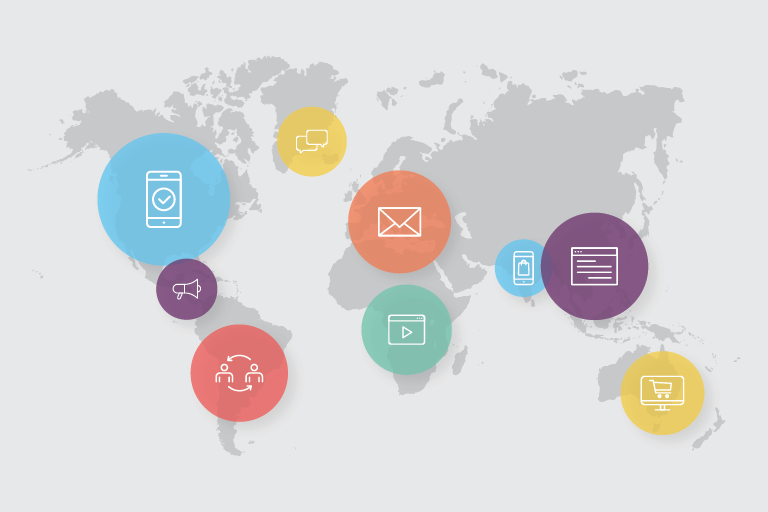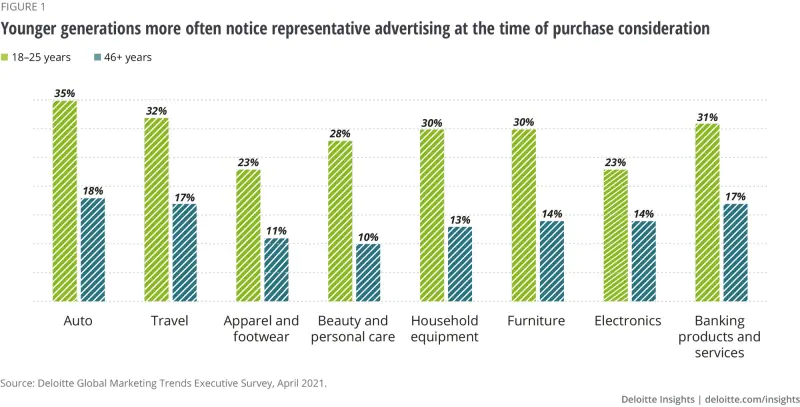With the midway point of 2022 in the rearview, we figured it’s as good a time as any to take a broader look at some global marketing trends.
When implementing marketing strategies, it’s easy to get tunnel vision. You have your brand, your audience, your channels—that’s all you focus on. And hey, we get it. After all, our whole platform is designed for creating individualized marketing campaigns, which requires you to zoom in on the details.
Once in a while though, it’s good to shake off the cobwebs, take a step back, and reevaluate.
Every year, Deloitte releases a Global Marketing Trends report. This year, Deloitte called out seven global trends with three of them really catching our eye: authentic inclusive marketing, meeting customers in a cookieless world, and a human-first data experience. Since these three are the most impactful when it comes to developing an individualized customer experience we thought it’s worth taking a closer look.
Authentic Inclusive Marketing
We’ve touched upon authentic inclusive marketing before, so it’s no surprise that a global marketing trend highlights the ever-diversifying customer base. It’s not just about including diversity in your marketing, however—it’s about brand values. Without aligning core values to promoting diversity and inclusivity, any effort a brand makes to take part in this trend will come across as inauthentic. And younger generations are taking note.
According to Deloitte, across all surveyed industries, those ages 18-25 notice inclusive advertising more often when it comes to making a purchase decision.
But, like we said earlier, it’s not just about the advertising, it’s about deeper values. In fact, “57% of consumers are more loyal to brands that commit to addressing social inequities in their actions.” That percentage jumps to 94% when looking at just Gen Z. Plus, “90% [of Gen Z respondents] say they are more willing to purchase products that they deem beneficial to society.”
We saw this in action in 2019 when Beauty brand Benefit Cosmetics hired model Kate Grant as their brand ambassador. Hiring a brand ambassador with Down Syndrome was a huge step for the beauty brand in their inclusivity efforts and those of the cosmetics industry at large.
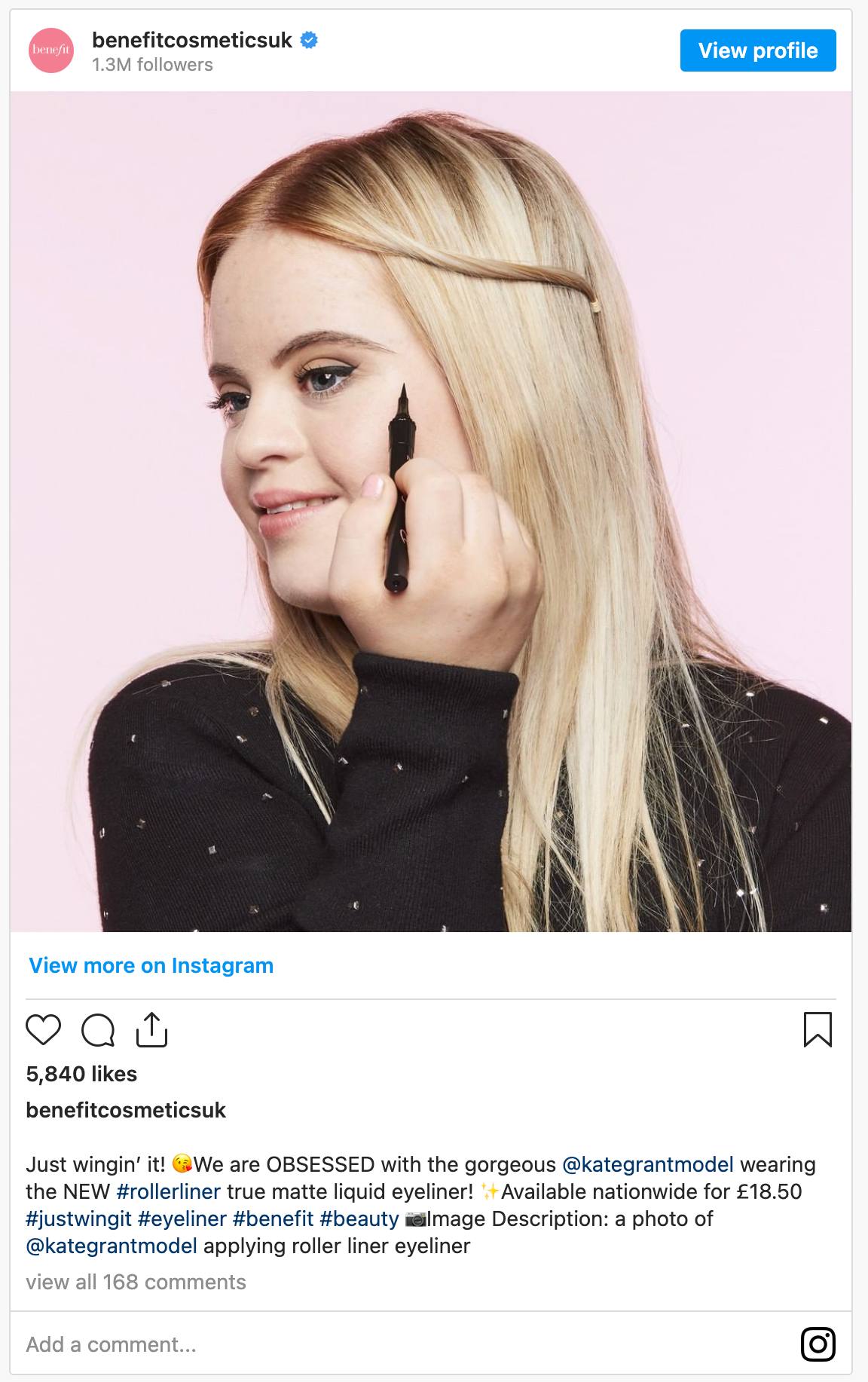

Kate Grant models liquid eyeliner for Benefit Cosmetics, showing that beauty is diverse. Source: Today.
But, Benefit Cosmetics not only advertises inclusivity, they also live by these values. Their website has accessibility settings like contrast adjustments and the ability to disable animations. Plus, they support social causes for equality, like by becoming a partner of Don’t Ban Equality, in support of reproductive rights.
The most important aspect of inclusive marketing is taking the next step. One ad or message doesn’t convey authenticity to your audience, and neither does explicitly calling out the inclusiveness of your marketing. That can feel like patting yourself on the back. To remedy this, focus on inclusivity early and often in your strategies. If it’s baked in from the beginning, it will appear throughout your campaigns and become less of a focus, and more of an inherent part of your brand, which consumers notice and appreciate.
Meeting Customers in a Cookieless World
At this point, we’re all aware of the phasing out of third-party cookies. Third-party agencies have historically collected and sold customer data to help marketers generate leads and better target their content. But, with Google ending third-party cookies in Chrome, the focus for marketers has shifted to “how do I connect with audiences without third-party data?”
Instead of using third-party cookies to gather customer data, brands have to switch to collecting zero- and first-party data. Zero-party data is data that comes directly from the customer. This includes surveys, account preferences/profiles, customer service, reviews, etc. First-party data is implicitly collected from customers interacting with your brand. So, if a customer visits your site, for example, their behavior on the site is collected as first-party data.
According to Deloitte, 61% of high-growth companies (those with at least 10% growth over the past year) are shifting towards a first-party data strategy.
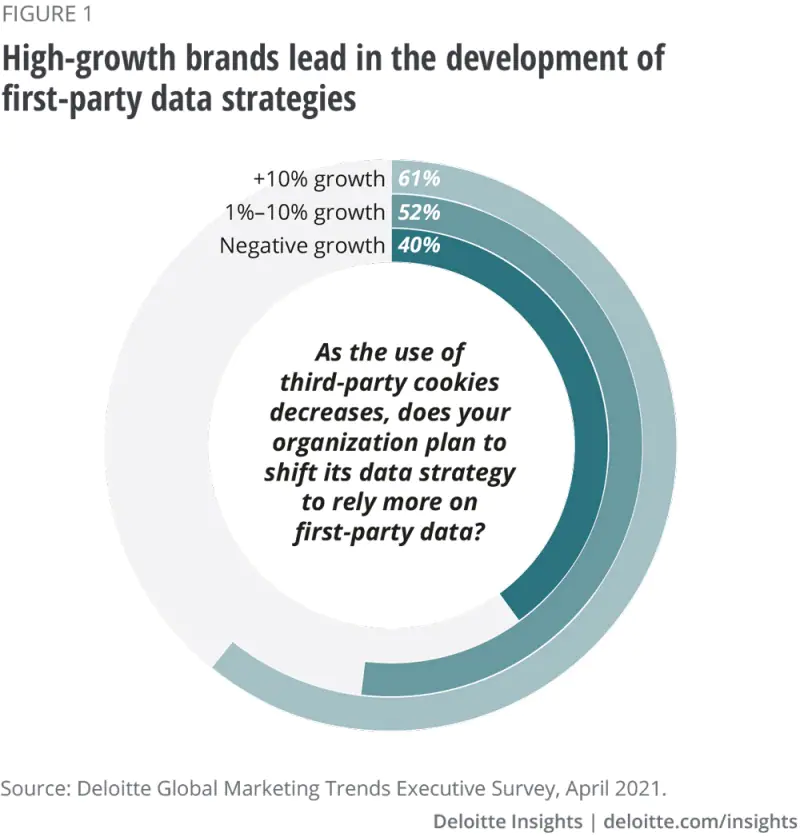

More than half of brands with high growth and 1-10% growth have shifted towards using first-party data. Source: Deloitte.
High-growth companies are ahead of negative-growth companies (51% compared to 36%) when using first-party data to deliver personalized content via “dynamic creative optimization.” This caught our eye because Deloitte labels this approach as a more sophisticated method for using first-party data.
Cotopaxi, an outdoor apparel brand, uses first-party data and dynamic content to create their abandoned cart campaigns. By collecting browsing and cart data while a customer is on their site, Cotopaxi can deliver highly individualized campaigns without relying on third-party cookies.
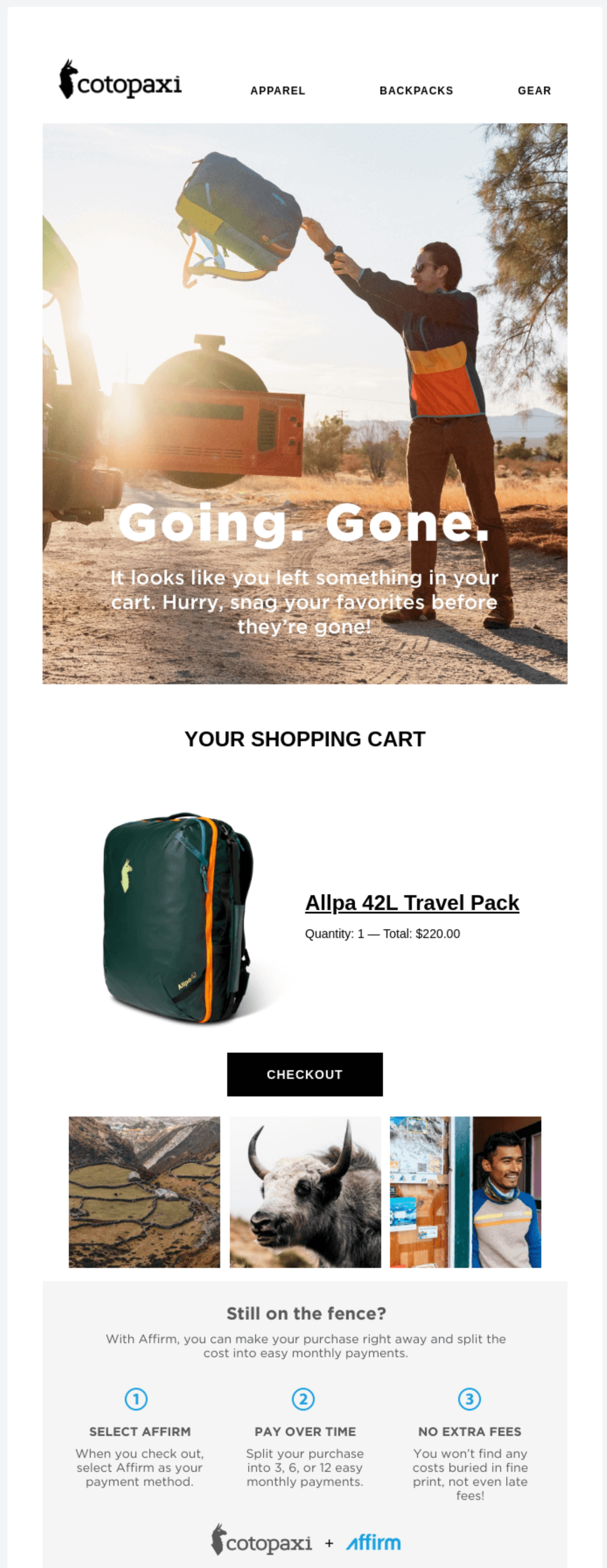

First-party data is collected when a customer visits and browses the Cotopaxi site. Source: Really Good Emails.
First-party data is collected during a direct interaction between the customer and your brand and used to build personalized marketing messages. When looking to build a deeper, longer-lasting connection with your audience, few things are more useful than their behavioral data in helping marketers individualize the experience. In your strategies, incorporate opportunities for customers to give you data points that help fill out the customer profile. As the lifecycle progresses, you’ll be able to tailor your messaging better and better to each user.
Human-First Data Experience
Data is often thought of as cold and robotic—just numbers, lacking emotion. It’s a collection of zeros and ones that provide brands with information that helps them market and, ultimately, make a sale. But now, the global marketing trend is shifting to a more empathetic use of data.
Like we mentioned in the previous section, there’s a vast amount of customer data available today. Brands have everything they need to build individual profiles and create an emotional connection with customers. But, with that, brands have to be careful to not blur the line between helpful and creepy.
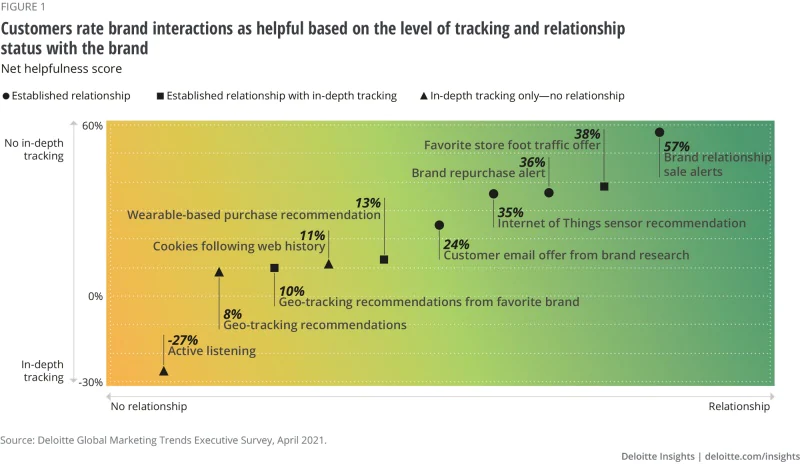

Features were given a net helpful score by combining how helpful versus. how creepy customers found them to be. Source: Deloitte.
What Deloitte pulled from the above data is that in-depth tracking methods (active listening, location tracking, etc.) land more on the creepy end of the spectrum than the helpful end.
“On the other hand, almost every one of our scenarios that were grounded in brand relationships—and shied away from in-depth tracking—were ranked by customers as the most helpful interactions. These relationships included some customer benefit such as a special offer or timely repurchase reminder.”
Streaming giant Netflix has a ton of data available for each customer. What’s important to note with their recommendations, though, is that there is a clear relationship established between Netflix and the customer already.


Netflix provides recommendations based on historical data. Clearly nodding to the established relationship. Source: Really Good Emails.
Brands should think about their customer relationships like any other relationship. If you’ve Googled a bunch of stuff about a person and haven’t actually met them yet, blurting out that you know where they went to high school when you first meet them will creep them out. Same goes for brands and customers. Ease into how you use customer data to build trust and relationships.
Customer-Focused Global Marketing Trends
Each of these trends demonstrates a focus on the customer. Whether promoting inclusivity and social impact, collecting data from experiences, or using data to individualize content, these global marketing trends put the customer first.
With customers expecting more and more individualization, a key to your marketing’s success is focusing on the customer first. What’s their context? Why are they shopping with you? What makes sense for them? By asking these questions, you’re already one step ahead, now it’s time to put these strategies in motion.
To learn more about how your brand can put each customer at the center of your marketing messages, schedule an Iterable demo today.
































